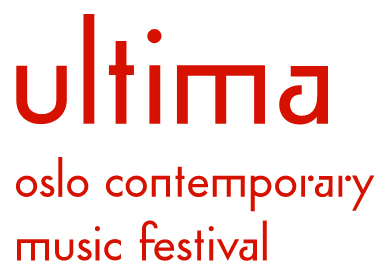 A golden rule in cinema is “show, don’t tell”, reminding the director it’s invariably more subtle and effective to avoid directly stating the things you want the audience to consider and instead to incorporate them into the medium itself, in the process allowing for a more subtle, rich and wide-ranging interpretation of meaning. Following on from my considerations yesterday about the relationship between music and images, the latter of which had had a damaging effect on the former in some of the works performed at this year’s Ultima festival, i wonder whether an inverse of that rule would work well in music: “tell, don’t show” – tell us in sound the things you want to say, don’t put them up explicitly in front of us as words or images. To this end, the works that made the deepest and most profound impact during Ultima’s opening weekend were ones that sidestepped visual stimuli and engaged directly with the invisible and the intangible.
A golden rule in cinema is “show, don’t tell”, reminding the director it’s invariably more subtle and effective to avoid directly stating the things you want the audience to consider and instead to incorporate them into the medium itself, in the process allowing for a more subtle, rich and wide-ranging interpretation of meaning. Following on from my considerations yesterday about the relationship between music and images, the latter of which had had a damaging effect on the former in some of the works performed at this year’s Ultima festival, i wonder whether an inverse of that rule would work well in music: “tell, don’t show” – tell us in sound the things you want to say, don’t put them up explicitly in front of us as words or images. To this end, the works that made the deepest and most profound impact during Ultima’s opening weekend were ones that sidestepped visual stimuli and engaged directly with the invisible and the intangible.
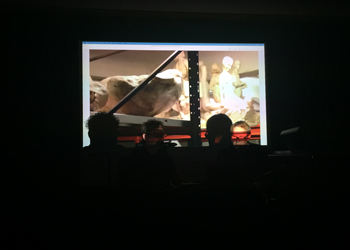 The most entertaining of them – and easily the most amusing experience of my three days of concerts, was a performance given by Carl Michael von Hausswolf and Michael Esposito. Time and place were critical: late at night, an almost full moon hanging in the sky, within the huge, half-lit space of Oslo’s Vigeland Museum, where sculptor Gustav Vigeland had once lived and worked. Earlier in the year the pair had made field recordings within the museum, and were giving the world première of their ‘findings’ of ‘Electronic Voice Phenomena’. It was as absurd as it was thought-provoking, the duo taking it in turns to play a tiny snippet of noise, followed by a spoken phrase, which with varying degrees of success – ranging from none at all to barely plausible – became perceptible when the snippet was played two more times. It was a fascinating demonstration of pareidolia: the way abstract, random sounds can be shaped by our imagination into the semblance of something pseudo-real. i experimented several times with ignoring the suggested phrases (many of which were laugh out loud hilarious: “here we go, Jacob”, “aren’t you pink?”) and substituting my own, and it was surprising how easy it was to impose what i wanted to hear onto the blank field recording noise, my brain ‘hearing through’ the bits that failed entirely and grasping ontp those passing moments where a random sound vaguely resembled a formant or a plosive. It was an excellent demonstration of how, given the right (or, if you prefer, wrong) kind of theatrics and presentation, gullible minds can be manipulated to conjure up whatever ‘truth’ they desperately want to find, out of the thinnest of air.
The most entertaining of them – and easily the most amusing experience of my three days of concerts, was a performance given by Carl Michael von Hausswolf and Michael Esposito. Time and place were critical: late at night, an almost full moon hanging in the sky, within the huge, half-lit space of Oslo’s Vigeland Museum, where sculptor Gustav Vigeland had once lived and worked. Earlier in the year the pair had made field recordings within the museum, and were giving the world première of their ‘findings’ of ‘Electronic Voice Phenomena’. It was as absurd as it was thought-provoking, the duo taking it in turns to play a tiny snippet of noise, followed by a spoken phrase, which with varying degrees of success – ranging from none at all to barely plausible – became perceptible when the snippet was played two more times. It was a fascinating demonstration of pareidolia: the way abstract, random sounds can be shaped by our imagination into the semblance of something pseudo-real. i experimented several times with ignoring the suggested phrases (many of which were laugh out loud hilarious: “here we go, Jacob”, “aren’t you pink?”) and substituting my own, and it was surprising how easy it was to impose what i wanted to hear onto the blank field recording noise, my brain ‘hearing through’ the bits that failed entirely and grasping ontp those passing moments where a random sound vaguely resembled a formant or a plosive. It was an excellent demonstration of how, given the right (or, if you prefer, wrong) kind of theatrics and presentation, gullible minds can be manipulated to conjure up whatever ‘truth’ they desperately want to find, out of the thinnest of air.
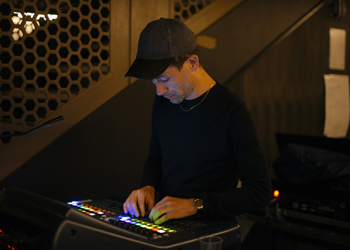 A whole lot more real and vivid was Testimonium, a half-hour, four-channel acousmatic work by Danish composer Jacob Kirkegaard. Presenting the piece in the austere, bunker-like space of Sentralen’s former bank vault was perfect. The source for Kirkegaard’s sounds were waste plants in Kenya and Denmark, and, enclosed within the thick walls and four speakers it was tempting to feel we’d all been plunged into the terrifying heart of one of those plants, poised to be destroyed (and, hopefully, recycled). In some respects Testimonium could almost be regarded as a noise piece, examining the details embedded in multiple layers within vast quantities of industrial clatter. As in all such works, it was most interesting when these walls of stuff were countered by all-but overwhelmed pitch elements, usually located somewhere distant but nonetheless becoming tangible points of focus within a soundworld seemingly falling apart at the seams. The presence of water was another interesting contrapuntal element, transforming the abstract complexities of noise into both a figurative and literal stream of tangibility.
A whole lot more real and vivid was Testimonium, a half-hour, four-channel acousmatic work by Danish composer Jacob Kirkegaard. Presenting the piece in the austere, bunker-like space of Sentralen’s former bank vault was perfect. The source for Kirkegaard’s sounds were waste plants in Kenya and Denmark, and, enclosed within the thick walls and four speakers it was tempting to feel we’d all been plunged into the terrifying heart of one of those plants, poised to be destroyed (and, hopefully, recycled). In some respects Testimonium could almost be regarded as a noise piece, examining the details embedded in multiple layers within vast quantities of industrial clatter. As in all such works, it was most interesting when these walls of stuff were countered by all-but overwhelmed pitch elements, usually located somewhere distant but nonetheless becoming tangible points of focus within a soundworld seemingly falling apart at the seams. The presence of water was another interesting contrapuntal element, transforming the abstract complexities of noise into both a figurative and literal stream of tangibility.
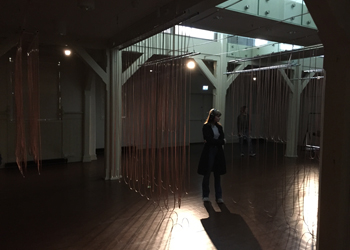 The most engrossing engagement with the invisible, though, came in the work of Christina Kubisch, which was well-represented at Ultima 2019. In addition to The City in Your Head, an exhibition of recordings from disparate points in Oslo (each with an accompanying photograph of its source), Kubisch also presented a new site specific work, Weaving, and had also designed a new one of her renowned Electrical Walks around the city centre. Located at Atelier Nord, Weaving consisted of what was, in effect, a large antenna – created from large collections of coiled wire draped over high supports, forming avant-garde ‘curtains’ – designed to pick up electromagnetic waves in the vicinity. Exploring the work wearing wireless headphones wasn’t just a revelation about the remarkable waves surrounding us to which we are all oblivious, but a demonstration of how, once adjusted to the environment, we could construct our own sonic journey through the space. Though my own movements were generally quite slow, i realised there was something dance-like to them, bobbing between centres of activity, exploring the transitions between them, pausing to allow sounds to settle, parting the ‘curtains’ to place my head into the middle of them and thereby experience the full intensity of the waves, retreating to the periphery where we could find near silence, the sound reduced here to a distant clicking or a kind of ‘open’ ambience. It was easy to forget these were actual sounds happening around us right now and to just experiment and play with them in outwardly silent, individual acts of immersive, inward creativity.
The most engrossing engagement with the invisible, though, came in the work of Christina Kubisch, which was well-represented at Ultima 2019. In addition to The City in Your Head, an exhibition of recordings from disparate points in Oslo (each with an accompanying photograph of its source), Kubisch also presented a new site specific work, Weaving, and had also designed a new one of her renowned Electrical Walks around the city centre. Located at Atelier Nord, Weaving consisted of what was, in effect, a large antenna – created from large collections of coiled wire draped over high supports, forming avant-garde ‘curtains’ – designed to pick up electromagnetic waves in the vicinity. Exploring the work wearing wireless headphones wasn’t just a revelation about the remarkable waves surrounding us to which we are all oblivious, but a demonstration of how, once adjusted to the environment, we could construct our own sonic journey through the space. Though my own movements were generally quite slow, i realised there was something dance-like to them, bobbing between centres of activity, exploring the transitions between them, pausing to allow sounds to settle, parting the ‘curtains’ to place my head into the middle of them and thereby experience the full intensity of the waves, retreating to the periphery where we could find near silence, the sound reduced here to a distant clicking or a kind of ‘open’ ambience. It was easy to forget these were actual sounds happening around us right now and to just experiment and play with them in outwardly silent, individual acts of immersive, inward creativity.
The Electrical Walk involved following a pre-designed map and instructions around Oslo city centre. During this, both the aspect of revelation and the scale of Weaving was greatly magnified, confronted by much more unpredictable and powerful sources in the open air. Oslo’s tram system in particular became a twitching, deafening assault on the senses, and the security systems at various stores were revealed to be hellish portals of angry pulsating doom. At times it felt a little like being plunged into a vintage, 8-bit arcade game, surrounded by primitive blips and bleeps and noise crud. What was perhaps most unnerving was how difficult it was to find silence: ‘not spots’ were few and far between, and their location was impossible to predict, often found in the most seemingly unlikely of places. Towards the end, while waiting for the tram to take me back to the start, a deep buzz coincidentally started to act as a ‘tonic’ for an accordion player performing next to the tram stop, briefly leading to a bizarre inside-outside electroacoustic duet. It was a remarkable experience, one that teased out and celebrated the beauty and ugliness of the invisible forces continually at play all around us.
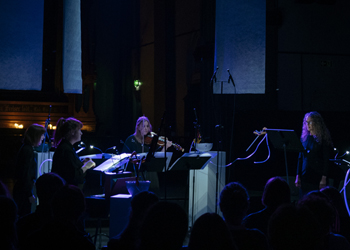 Not everything at Ultima 2019 was all about things seen and unseen. One of the most beautiful works i heard took place at Kulturkirken Jakob in an afternoon concert given by the outstanding vocal quartet Song Circus (who had been so impressive at this year’s Only Connect festival). Their concert included the first complete performance of Absence by Norwegian composer Therese Birkelund Ulvo. Loosely inspired by a native folk song, Graatarslagjet – in which a wedding party falls through ice and drowns, after which a solitary fiddler mourns their loss – the work, including hardanger fiddle performed by Britt Pernille Frøholm, was breathtakingly immediate, creating drama from the most microscopic of sounds and gestures. Soft close singing was interspersed with articulated breaths and a plethora of tiny vocal tics and twitches (occasionally bringing to mind Sciarrino), many of which seemed almost involuntary. Although its language was, from one perspective, a broken-up network of minutiae strung together into a loose-woven tapestry, there was at the same time a sense that everything we were hearing had actually begun life as a changeless, eternal drone, which was being modulated and disrupted by the quartet’s vocal actions. At one extreme, Ulvo practically destroyed the fabric of the music later on via an outbreak of stubbornly persistent coughs, while at the other extreme, she united the singers into small concentrations that vaguely resembled chant. Though it was in its own way just as wildly experimental as the rest of the music during the opening weekend at Ultima 2019, Absence had a focus, an intensity and above all an elegance that set it apart.
Not everything at Ultima 2019 was all about things seen and unseen. One of the most beautiful works i heard took place at Kulturkirken Jakob in an afternoon concert given by the outstanding vocal quartet Song Circus (who had been so impressive at this year’s Only Connect festival). Their concert included the first complete performance of Absence by Norwegian composer Therese Birkelund Ulvo. Loosely inspired by a native folk song, Graatarslagjet – in which a wedding party falls through ice and drowns, after which a solitary fiddler mourns their loss – the work, including hardanger fiddle performed by Britt Pernille Frøholm, was breathtakingly immediate, creating drama from the most microscopic of sounds and gestures. Soft close singing was interspersed with articulated breaths and a plethora of tiny vocal tics and twitches (occasionally bringing to mind Sciarrino), many of which seemed almost involuntary. Although its language was, from one perspective, a broken-up network of minutiae strung together into a loose-woven tapestry, there was at the same time a sense that everything we were hearing had actually begun life as a changeless, eternal drone, which was being modulated and disrupted by the quartet’s vocal actions. At one extreme, Ulvo practically destroyed the fabric of the music later on via an outbreak of stubbornly persistent coughs, while at the other extreme, she united the singers into small concentrations that vaguely resembled chant. Though it was in its own way just as wildly experimental as the rest of the music during the opening weekend at Ultima 2019, Absence had a focus, an intensity and above all an elegance that set it apart.

[…] of this came in the sound walk devised and led by Christina Kubisch. A regular at Ultima, in 2019 Kubisch devised a walk around the city centre which, wearing her custom headphones that reveal electromagnetic waves, transformed its streets, […]